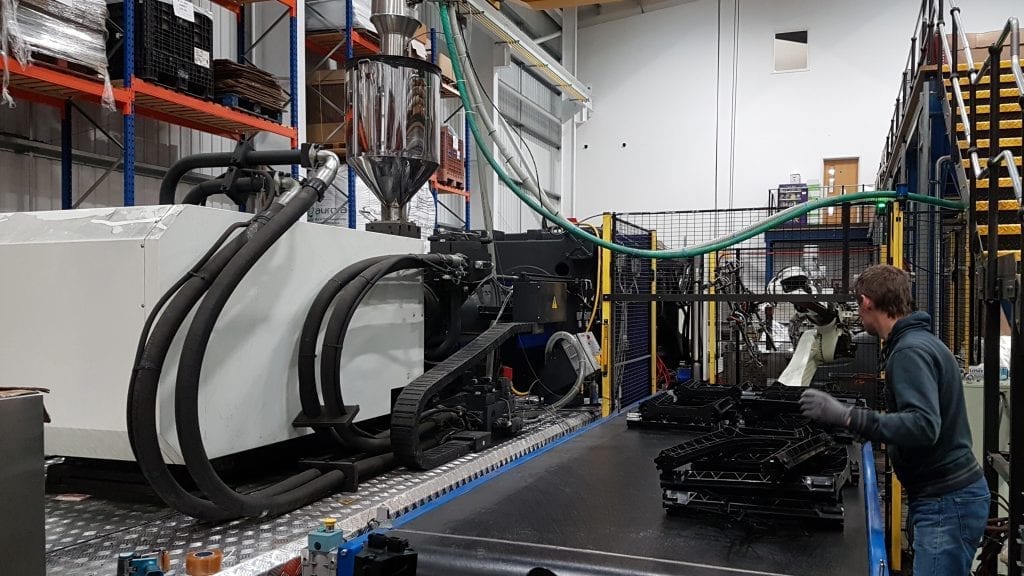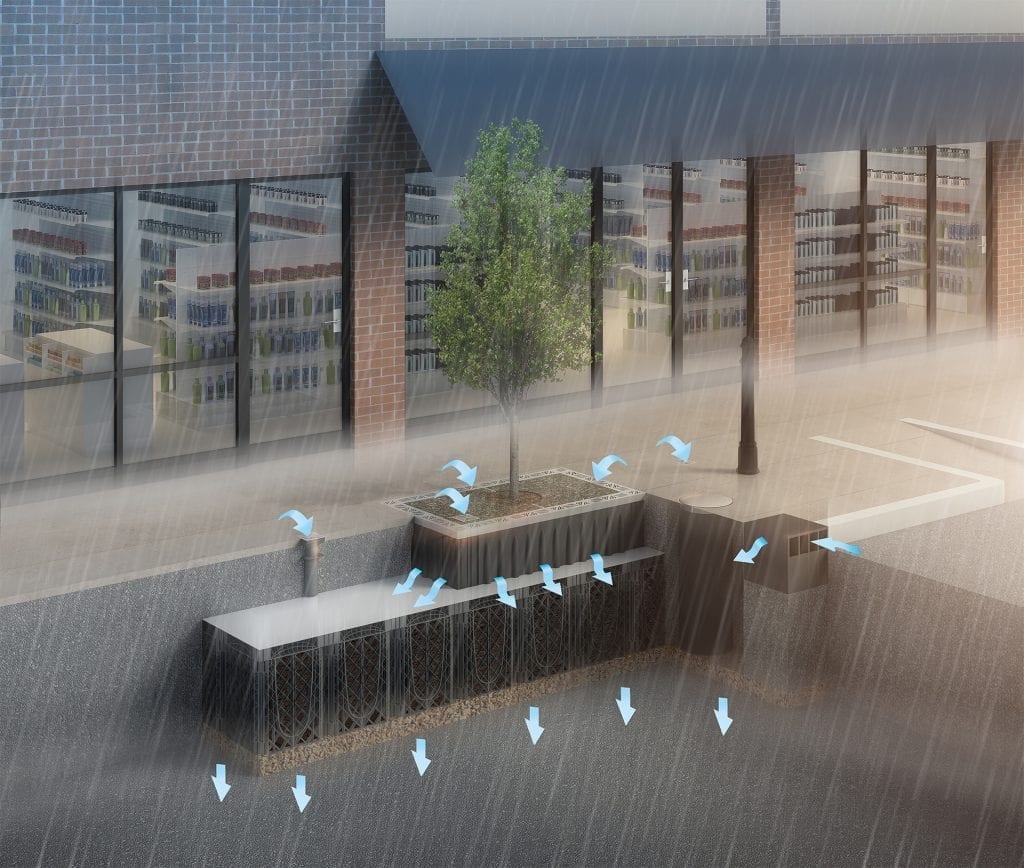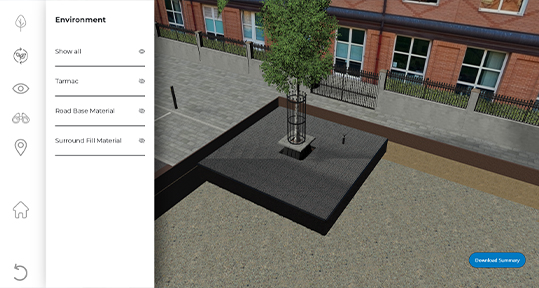Most people understand the problems associated with single-use plastics, with many companies around the world making every effort to ensure that their value chain is more ethical and sustainable. We have a collective responsibility to the environment and to future generations to ensure that our business practices now are setting a gold standard for the models we develop in the years to come.
At GreenBlue Urban our focus on providing the green and blue infrastructure for existing and new communities is inextricably linked to the ethical and environmental policies that we apply to our supply chain. It would indeed be counterintuitive to provide a system that ensures the long-term resilience of our urban environments without considering how those solutions are manufactured and the ways in which the environmental impact of such activities can be reduced to the lowest levels.

We are delighted that we have created a supply chain that is predicated on sustainable manufacturing, ensuring that as we develop new and innovative soil cell systems, we are reducing our footprint every step of the way. We work diligently to ensure that every new piece of tooling and every new design is created to ensure that we not only reduce the time and cost of manufacture, but also so that we can reduce the volume and weight of product necessary for the implementation of a project.
This means that clients can be confident that with each new innovation development, we are aspiring to reduce the carbon footprint of the supply and delivery to site and also the amount of product used to ensure that canopy cover across our towns and cities is maintained and enhanced
Using a robust recycled polypropylene means that we can avoid installing virgin plastic under the paved surface and what makes this system even more desirable is the potential for reuse and re-installation. The design life of our system is guaranteed to last beyond one hundred years and so the need to consistently re-excavate and to use more product is drastically reduced.

So what is polypropylene?
Polypropylene (PP) is a thermoplastic “addition polymer” made from the combination of propylene monomers. Polypropylene was first polymerized in 1951 by a pair of Phillips petroleum scientists named Paul Hogan and Robert Banks and later by Italian and German scientists Natta and Rehn. Commercial production began three years after and Natta perfected and synthesized the first polypropylene resin in Spain in 1954.
What are the advantages and characteristics?
1. Chemical Resistance: Diluted bases and acids don’t react readily with polypropylene, which makes it a good choice for containers of such liquids, such as cleaning agents, first-aid products, and more.
2. Elasticity and Toughness: Polypropylene will act with elasticity over a certain range of deflection (like all materials), but it will also experience plastic deformation early on in the deformation process, so it is a “tough” material. Toughness is an engineering term which is defined as a material’s ability to deform (plastically, not elastically) without breaking.
3. Fatigue Resistance: Polypropylene retains its shape after a lot of torsion, bending, and/or flexing. This property is especially valuable for our soil support cells. We need to know that what we innovate to assist highways and drainage engineers for use in roadways, is up to the task in the long term.

Polypropylene is classified as a “thermoplastic” (as opposed to “thermoset”) material which has to do with the way the plastic responds to heat. Thermoplastic materials become liquid at their melting point (roughly 130 degrees Celsius / 266 degrees Fahrenheit in the case of polypropylene). A major useful attribute about thermoplastics is that they can be heated to their melting point, cooled, and reheated again without significant degradation. Instead of burning, thermoplastics like polypropylene liquefy, which allows them to be easily injection molded and then subsequently recycled. This property is critical for ourselves and those through the wider green infrastructure and SUDs / LID industry who want to ensure that technical engineered solutions made from this material are able to be reused when the industry moves forward.

If an engineered system is not used for tree pit solutions then are the alternatives more environmentally friendly?
Without getting into the academic and technical detail, the short answer is that the use of structural soil, tree sands, and Stockholm mixes require vast volumes to obtain good quality canopy cover and the rates of replacement for trees installed into these systems is higher. The replacement of urban trees periodically because they cannot thrive in these mixes has a detrimental impact on the ecosystems services trees can provide. So reducing their lifespan in this way results in a curtailment of their ability to sequester the pollutants and carbon they could be if installed correctly in the first instance.
A recycled system doing more for less…
If the above arguments were not sufficient let us also consider the benefits of amalgamating our urban tree planting and landscaping with our long-term water management objectives. Through the use of a SUDs / LID bioretention tree pit, designers are able to reduce the amount of conventional, grey stormwater infrastructure systems installed on each scheme and use a recycled plastic cell to attenuate stormwater, while providing for the health of trees.






